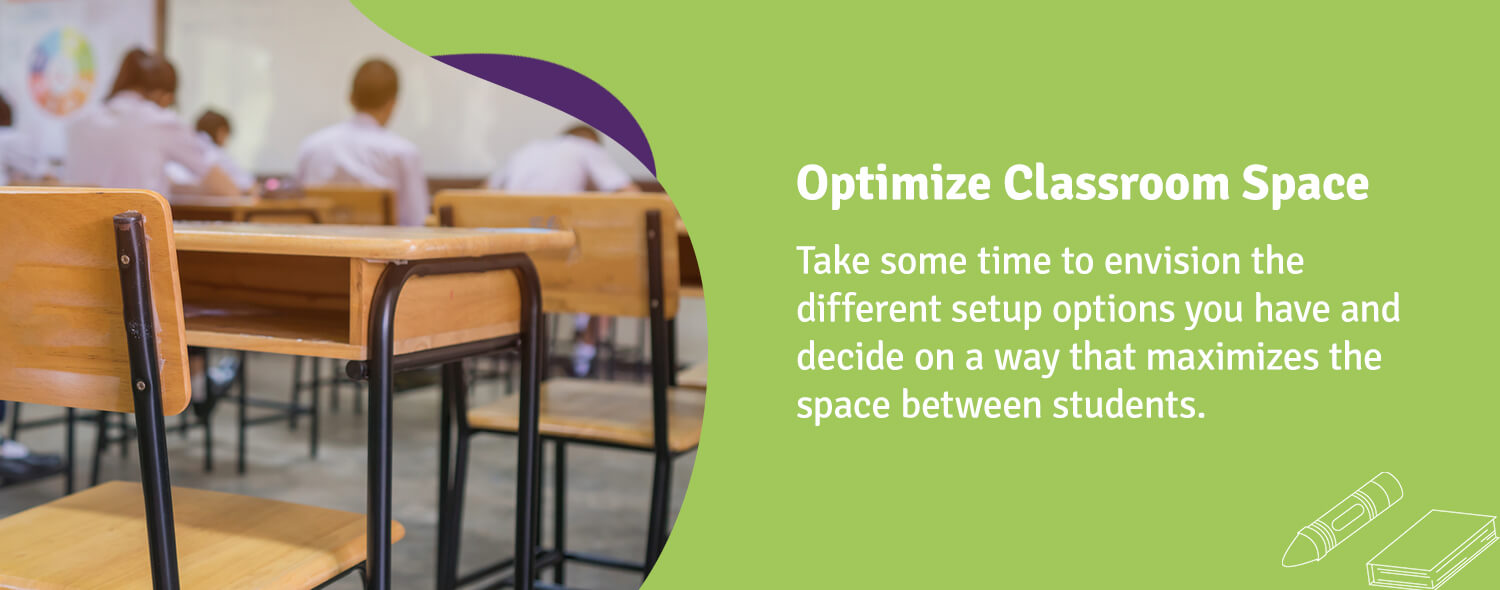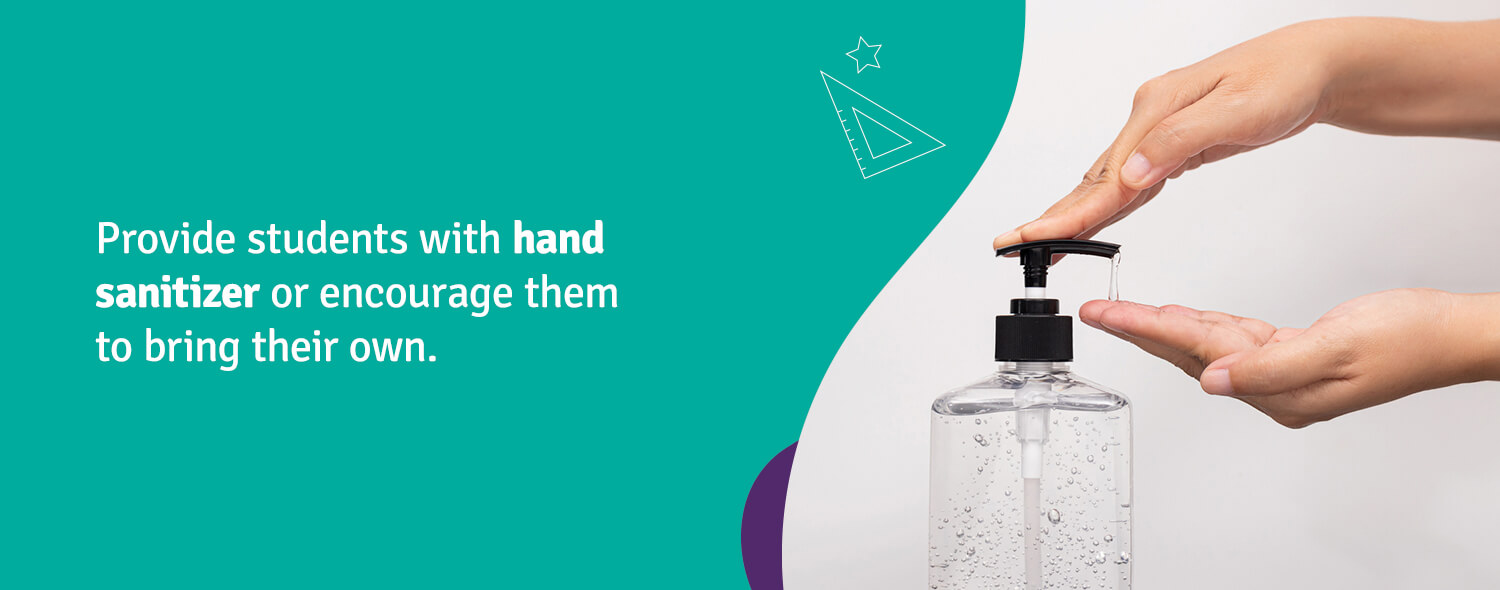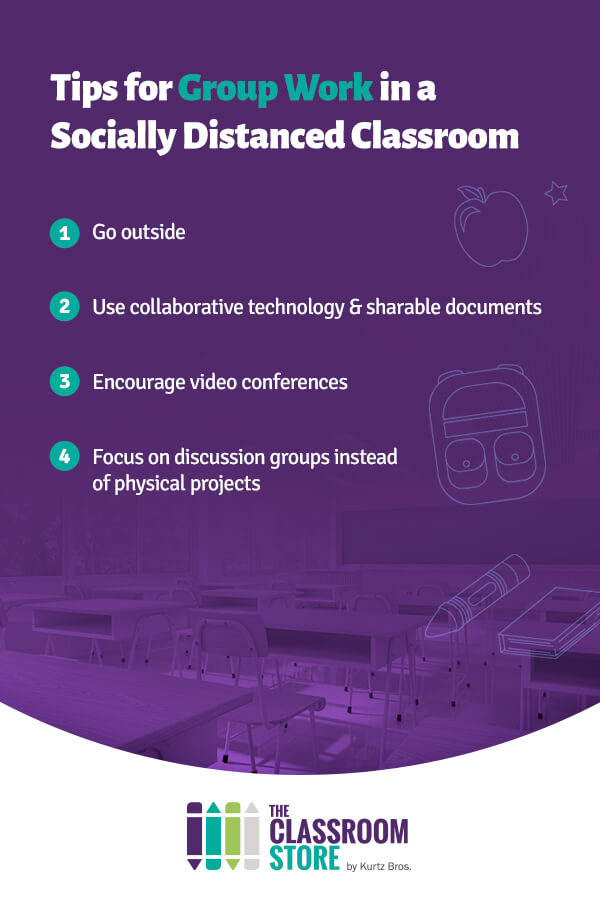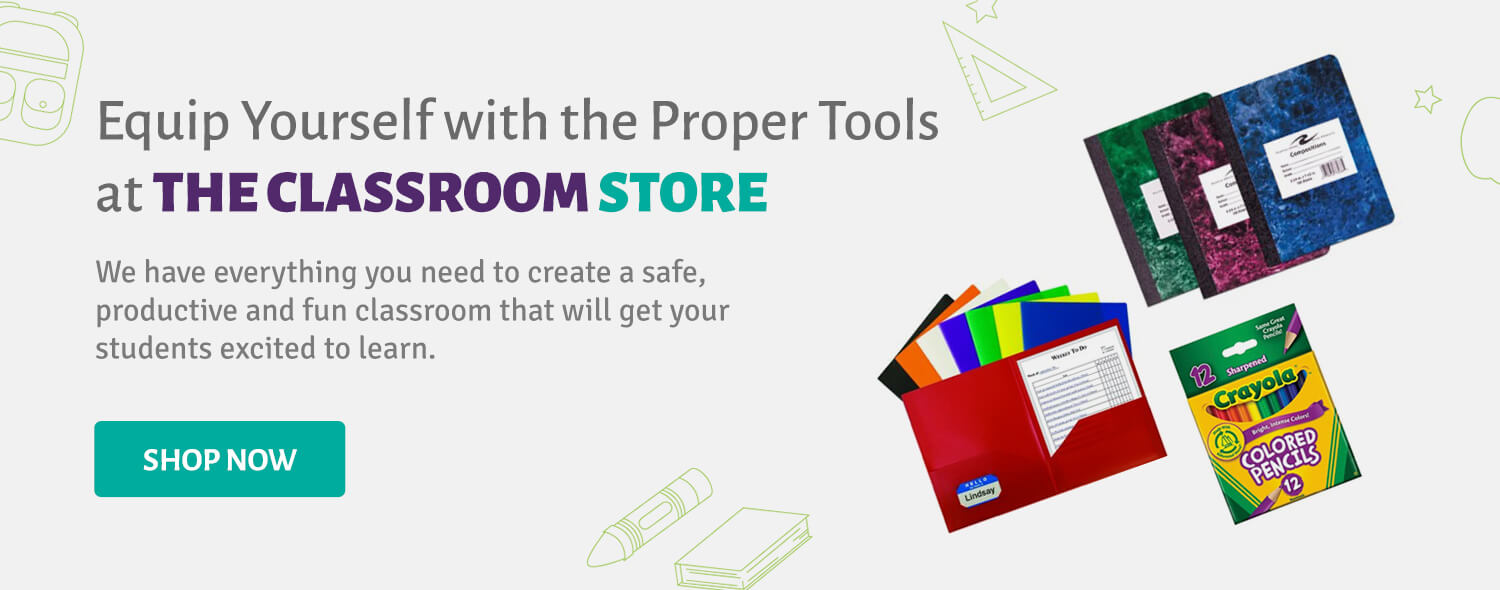Tips for Teaching in a Socially Distant Classroom

Although safety within the school has always been a priority for teachers, the definition of what a safe classroom entails has changed greatly over the past year. With the ongoing COVID-19 pandemic, it is important, now so more than ever, that teachers work to maintain a safe and healthy space for students to learn. As the knowledge about the coronavirus increases, the measures to prevent the spread of the virus change, and many teachers have found it more difficult to keep students engaged and active in the classroom with the constantly changing regulations for socially distant learning.
As a teacher, your primary focus should be on your students and encouraging them to learn, but with a distraction as serious and dynamic as a pandemic, it may be hard for you to focus. You may find yourself spending more time thinking about ways to make your classroom a safe space than you do making your lesson plans. While a safe classroom is important, it is also necessary to be able to prioritize your teaching.
11 Tips for Teaching in a Socially Distanced Classroom
Depending on the age of the students you teach, you may struggle a little more than other teachers with getting your students to follow the recommended guidelines, such as mask mandates and social distancing. If you find yourself overwhelmed by the constant changes brought on by the pandemic, here are some tips to help you keep a socially distant classroom while primarily focusing on your students’ educations:
Classroom Setup
The best place to start the thought process of how to teach in a socially distant classroom is by thinking of the classroom itself.
1. Optimize classroom space.
Based on its size and shape, you may not have many options on how to organize your classroom. However, take some time to envision the different setup options you have and decide on a way that maximizes the space between students.
This may mean that you have to remove some unnecessary items you have brought into the classroom, such as additional seating or rarely used shelves or easels. Also, think about heavily trafficked areas of the classroom, such as pathways to the door or the teacher’s desk, and try to avoid seating students in this vicinity if possible.
2. Mark the floor with tape as a guideline for students.
After coming up with a suitable classroom setup, mark the floors with tape so you know where each desk belongs. Desks can easily get bounced around or moved, so at the end of the day, have students ensure that their desk properly aligns with the tape marks on the floor.
Similarly, put tape or stickers on the floor to mark where students should stand during different classroom activities. For example, if you need your class to line up at the door, have marks on the floor spaced out so that each student has their own personal space. This will encourage students to continue practicing social distancing even when they are not seated.
Classroom Procedures
After you choose the most effective setup for your room, establish rules to go along with it.
3. Establish rules in your classroom and enforce them.
Before you announce your classroom rules or any changes to them, make sure you have thought them out thoroughly. Think about the different questions students may ask you and come up with a definitive answer for them. Some questions to think about are: When are your students required to wear masks? Where should they store their masks when they are off? What are restroom or nurse procedures? Are water bottles allowed in the classroom?
Consider school and district-wide rules and base your answer off those in addition to what you feel comfortable with. Once you figure out your classroom procedures, communicate them clearly to students. If you make any alterations to these rules, make all of your students aware of this, and do not be afraid to remind students who may forget the rules of your room.
4. Use posters and signs to remind students of the rules.
Put signs or labels around the room reminding students to practice social distancing and cleanliness. The more exposure to a message your student has, the more likely they are to subconsciously follow that message. Do not be afraid to refer to these signs and point them out to students who may forget to follow the rules. Letting students know that you see when they do not follow instructions may encourage them to try to remember the rules in the future.
5. Encourage classroom cleanliness.
Depending on the age group of your students and the resources they have access to outside of the classroom, your class may be the first introduction to proper cleaning and sanitation the student has. Consider the age group or developmental status of your students, decide if cleanliness lessons would benefit them, and work that into a class lesson. For example, if you teach young children, consider taking classroom time to teach your students proper handwashing techniques and why they are important.
If you make it a point early in the school year to establish and enforce rules about keeping the classroom clean, students will be more likely to continue with these established practices throughout the year. If you find your classroom is a mess by the end of the day, set specific times throughout the day for you and your students to straighten up to ensure constant cleanliness.
6. Make cleaning supplies and sanitizers available to your students.
 Another important factor of cleanliness is knowing the difference between disorganized and unsanitary. You may have an organized classroom that appears clean, but if you do not have cleaning products or sanitizers, germs and bacteria may linger in your classroom. Provide students with hand sanitizer or encourage them to bring their own. Between having your students use hand sanitizer and you wiping off any commonly touched areas with disinfectant, your classroom will be clean and sanitary.
Another important factor of cleanliness is knowing the difference between disorganized and unsanitary. You may have an organized classroom that appears clean, but if you do not have cleaning products or sanitizers, germs and bacteria may linger in your classroom. Provide students with hand sanitizer or encourage them to bring their own. Between having your students use hand sanitizer and you wiping off any commonly touched areas with disinfectant, your classroom will be clean and sanitary.
7. Remind students (and yourself) to stay home if they are sick.
Even though attendance is an important part of class, it is more important now than ever to stay home if you do not feel well. While there is a fine line between missing class just to skip and not attending due to not feeling well, you must encourage your students to be in tune with their bodies and be aware of how they feel. Reminding students the importance of staying healthy and preventing the spread of germs, be flexible with your lessons so that any student who needs to miss class can easily catch up. You do not want to make a child feel as if they must come to school for the fear of not being able to catch up if they miss a few classes.
Teaching Tools
Although it requires thinking outside the box, there are a lot of ways that you can adjust your usual teaching strategies to be more compliant with social distanced learning.
8. Use digital presentations whenever possible.
Digital presentations, such as PowerPoint presentations and Google Slides documents, are good resources to use because you can send these presentations to your students if you, a student or the entire class need to convert to remote learning for a time.
9. Take advantage of online resources.
There are so many online resources and websites you can use to supplement your classroom. Utilize resources such as the Global Digital Library and Barnes & Noble Free Ebooks. These resources can act as a companion to your in-person lessons, because students can access them from home to continue their learning and reading outside of the classroom.
10. Go to your student instead of having them come to you.
Even though it may be easier for you to have students come up to your desk if they have a question or finish an assignment, instead of telling them to bring their paper to you, have them raise their hand and go to them. It is better to have just one person walking around the classroom than having multiple people do so. The keeps students in their seats, limiting the amount of physical interaction the students have with one another and preventing students from touching objects around the classroom.
11. Try to organize a virtual field trip.
Field trips are a great learning experience that get students out of the classroom, giving them a hands-on learning experience. Just because you are unable to take students on a traditional field trip does not mean that you cannot modify the experience to make it a more socially distant event. Instead of taking your students outside the classroom, bring something special to them.
Many places currently offer online tours and learning experiences that you can share with your students. If you want to do something more personalized and tailored to your lesson plans, reach out to someone in a field relating to your lesson and see if you can get them on a video call to interact with your students. Although it is not the same as getting to visit somewhere outside of school, if you plan some in-class activities that go along with the theme of your virtual field trip, you may find students more engaged than in an everyday classroom setting.
Tips for Group Work in a Socially Distanced Classroom
Assigning group work has always been a debated topic, and it has become even more so with the need for social distancing. Even though many people dislike working in a group, it is necessary to help teach students to work with others and communicate effectively. As students need to continue to work together in a close setting, it is important for you to find ways to allow partner work without jeopardising your classroom’s social distancing. Here are a few tips on how to handle group work in a socially distanced setting:
1. Go outside.
One of the simplest solutions of how to complete collaborative work without having students too close to one another is to go outside. This allows your students to spread out more freely than in the classroom. Plus, this lets them get some fresh air too. If you do plan to have class time outside, let your students know a day in advance so they can dress accordingly. As the winter months approach, however, this may not be a viable option for your classroom.Consider the weather and space your campus allows and use your best judgment to decide if going outside is the right option for you.
2. Work with collaborative technology and sharable documents.
Google, Apple and Microsoft, along with other software companies, offer many applications and technologies that allow two people to work on a project simultaneously from different places. Some apps even have real time tracking that will let students see their partner’s work as they do it. Working online through these technologies allows students to communicate about their project while sitting six feet apart or even from their respective homes.
3. Encourage video conferences.
As many students and teachers had to work remotely for periods of time last year, most people are familiar with conference call tools like Zoom, Google Meet and Skype. While your students may find it weird at first to have to call their classmates either outside of school or even in the same room as one another, normalize this type of interaction. It lets students talk freely with one another while also advocating social distancing.
4. Focus on discussion groups instead of physical projects.
If you feel comfortable splitting your classroom into small groups and working that way, you can make this type of collaboration safer by having group discussions instead of physical projects.This means that instead of having a group of students all writing on one sheet of paper and using the same classroom supplies to create something, base your lesson on group discussions, which allows your students to hear one another’s thoughts on the subject while still sitting a distance apart.
Equip Yourself with the Proper Tools
In this new landscape of learning and teaching that you constantly have to navigate, it may be hard for you to adjust to new ways of presenting classroom material. While it make take time for you to become accustomed to, adapting to the new world we live in is imperative in the education field. To help you adjust and ensure that you are ready to modify your teaching strategies, The Classroom Store is here to help.
With our wide variety of teaching supplies, classroom materials and instructional materials, we have everything you need to create a safe, productive and fun classroom that will get your students excited to learn. Visit our site today, and feel free to fill out our contact form with any questions, suggestions or comments you may have!

